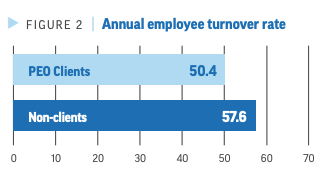Running a business successfully requires both vision and capital. Whether you want to expand operations, upgrade equipment, or manage working capital, access to timely finance plays a crucial role. If you are a business owner looking for an INR 10 Lakh Business Loan, understanding the process and eligibility can help you secure funds easily and manage the loan responsibly.
In this guide, we explain everything you need to know about getting a Business Loan, including eligibility, documentation, and how to apply online.
What Is a Business Loan?
A Business Loan is a financial product designed to provide funding for business-related needs such as expansion, equipment purchase, or operational expenses. These loans are often collateral-free, which means you do not need to pledge any property or asset to secure the loan.
In India, digital platforms have made applying for a Business Loan easier than ever. You can now submit your application online, upload necessary documents, and receive funds directly into your bank account once approved.
For entrepreneurs and small business owners, an INR 10 Lakh Business Loan can be a great way to meet short-term or long-term business goals.
Key Features of a Business Loan
Before applying, it is important to understand the main features of a Business Loan:
- Loan Amount: You can get financing starting from INR 7 Lakh up to INR 1 Crore, depending on your business needs and eligibility.
- Interest Rate: Attractive rates starting from 15%* per annum.
- Tenure: Flexible repayment tenure of up to 60 months*, giving you enough time to manage repayments smoothly.
- Collateral-Free: No need to mortgage any property or asset to get the loan.
- Quick Disbursal: Funds are credited directly to your account after verification and approval.
- Simple Documentation: Minimal paperwork with fully digital processing.
- Overdraft Facility: Access extra funds conveniently when needed.
These features make Business Loans a reliable funding option for entrepreneurs across industries.
Eligibility Criteria for a Business Loan
Lenders use specific criteria to assess your eligibility before approving the loan. Here’s what you need to qualify:
- Age: Applicant must be between 24 and 65 Years*.
- Business Vintage: The business should have been operational for at least 3 Years.
- Annual Turnover: Between INR 80 Lakh and INR 500 Crore.
- Credit History: Minimum of 6 months of credit history.
- Ownership: The applicant should own the residence or office premises.
Maintaining a clean credit record and a consistent income flow increases your chances of getting an INR 10 Lakh Business Loan.
Documents Required for a Business Loan
Before applying, prepare the following documents required for business loan to ensure a smooth process:
KYC Documents
- PAN Card of the entity and owners.
- Entity registration documents, such as GST registration, Shop Act, or Certificate of Incorporation.
Identity and Address Proof
- Aadhaar Card, Voter ID, Driving Licence, or Passport.
- Utility bill or rent agreement for address verification.
Financial Documents
- Last 2 Years’ audited financial statements and Income Tax Returns.
- Last 12 months’ bank account statements.
- Latest 6 months of GST returns.
Ownership Documents
- Utility bill, sale deed, or property tax receipt as proof of business ownership.
Submitting complete and accurate documentation helps in faster processing and verification.
Fees and Charges for Business Loan
Before you apply, it is important to know about the applicable fees and charges.
Knowing these charges in advance helps you plan your repayment more effectively.
How to Apply for a Business Loan Online?
Applying for a Business Loan is simple and can be completed online in a few steps.
Step 1: Apply Online
Visit the lender’s website and go to the Business Loan section. Click on “Apply Now” and fill in details like your business name, annual turnover, and required loan amount.
Step 2: Document Submission
Upload the required documents such as KYC proofs, financial statements, and bank account details. Ensure that all documents are recent and correctly scanned.
Step 3: Verification Process
The lender verifies your application, documents, and credit score. Some lenders may contact you for additional details or to confirm business information.
Step 4: Approval and Disbursal
Once approved, the loan amount is credited directly into your registered bank account. Disbursal may take a few hours or up to two working days, depending on the lender’s internal process.
Benefits of a Business Loan
- Access to Immediate Funds: A Business Loan gives you access to capital that can be used for various business purposes.
- Flexible Repayment Options: Choose a repayment tenure that suits your cash flow, ranging up to 60 months*.
- Collateral-Free: No need to mortgage any asset, making it ideal for small businesses.
- Digital Convenience: Apply online and track your loan application easily.
- Business Growth: Use the funds for expansion, inventory purchase, or upgrading business infrastructure.
How an INR 10 Lakh Business Loan Can Help Your Business?
An INR 10 Lakh Business Loan can significantly support your business goals. Here’s how:
- Expand Operations: Open a new branch, hire more staff, or invest in marketing.
- Purchase Equipment: Upgrade machinery or tools to increase production efficiency.
- Manage Working Capital: Maintain smooth operations during lean periods.
- Invest in Technology: Modernise systems and software to improve productivity.
- Meet Seasonal Demands: Build inventory to cater to high-demand periods.
Proper utilisation of the loan can help strengthen your business and improve profitability over time.
Conclusion
Securing an INR 10 Lakh Business Loan can be the stepping stone your enterprise needs to scale new heights. By maintaining proper financial discipline, preparing the right documents, and choosing a trusted lender, you can ensure a smooth borrowing experience.
Financial institutions like L&T Finance offer Business Loans with competitive interest rates starting from 15%* per annum, flexible repayment tenure of up to 60 months, and a collateral-free process. With a seamless digital application journey and transparent charges, L&T Finance supports entrepreneurs in achieving sustainable business growth.








